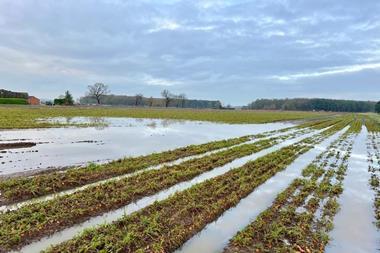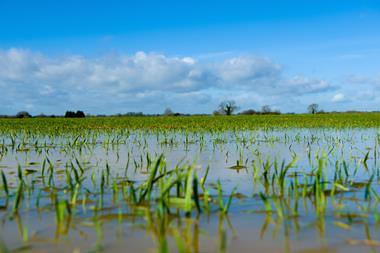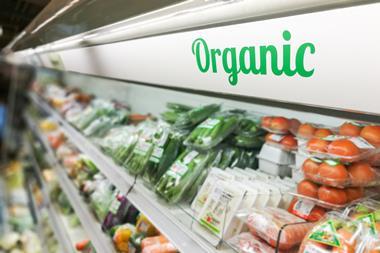Mango sales disappoint Mango sales have been disappointing this year. This is due to the influx of alternative cheap tropical fruit such as pineapple and sudden surges in the supply of traditional deciduous such as grapes and melons, according to trade sources. In many cases, prices have not covered costs. Several importers have withdrawn early from Brazil, currently making as little as £3.50/ctn on the wholesale markets. As the season comes to a close there are, nevertheless, hopes that Mexican growers will fare better as there have been reports of a good quality crop.
Dragon fruit interest grows Exotics continue to be a growth area for retailers although many admit there is still work to be done to educate customers in how to judge ripeness and even preparation. Yet despite its unusual vivid cerise colour, and peculiar shape, interest is growing in the pitahaya or dragon fruit’. While it originated in Central America, it is now being grown in Israel which is expecting a bumper crop this year. Rob Cullum, responsible for exotics for Agrexco, reports that sales are already 15% higher at the start of the season which lasts until December. Between eight to 14 fruit are packed in trays which have been making £8-8.50 on the markets. Cullum projects that during September Israeli exports will reach 3,000 trays a week of which the UK could receive as much as a third.
Cirio Del Monte is bringing out a new ambient exotic fruit juice range, World Fruits the first launch for the Del Monte brand since its acquisition by Italian food giant Cirio in February 2001. Peruvian Star Fruit, New Zealand Kiwi Fruit, Costa Rican banana and Indian Mango and Papaya all have an apple or orange juice base. Packaging is light green and features fruit and flowers. The launch is backed by ads in women’s magazines, targeted sampling and an on-pack holiday competition. Rsp: £1.19.
Veg out with Sea Lettuce Consumers are getting a taste for exotic sea vegetables, says European specialist importer Bud Holland. The products are based on varieties of edible seaweed and called Sea Lavender, Sea Beans, Sea Cabbage and Sea Lettuce. The concept isn’t new it was trialled by Breton Growers more than a decade ago and appeared briefly on supermarket shelves. Bud Holland hopes the new names will capture the consumer imagination and said the products were already proving popular. Meanwhile, Samphire a traditional delicacy grown on the salt flats of the East Anglian coastline is not only being rediscovered, but having its season extended all-year round. Commercial producers of the delicacy even include Saudi Arabia.
Guavas have potential South African guava growers are looking to target the UK by promoting the fruit’s healthy image. They hope to repeat New Zealand’s success with kiwifruit and believe bigger volumes should bring prices down the fruit currently retails for about 69p. Currently, 18,000t of the exotic fruit are produced annually in the Western Cape but only 4,000t are exported to the EU. SA growers believe production could be increased five-fold. Wiehahn Victor, ceo of the newly formed Guava Producers’ Association, said the UK and Benelux countries would be targeted because consumers were more familiar with the fruit. He said he was now considering a marketing campaign based on its nutritional benefits. “It’s very healthy - a guava has 10 times the amount of vitamin C as a citrus fruit, and is high in fibre and iron. It is also almost organic, as it grows wild.” The fruit can be pulped, juiced, dried or canned but Victor said fresh fruit would particularly appeal to UK consumers. “We may have to use air-freight in the beginning and I’m thinking about packaging them in protective shells, like kiwis. It’s an opportunity for us to do something different.” The fruit has a three-week shelf life and is harvested in the South African winter, from April to October.
On increase Oriental vegetables with strange sounding names such as Mei Quing Choi are being tested in the UK in response to the increasing demand for new tastes and shapes. This may still be a niche market, but Sainsbury has been selling a range for some time and expects it to expand. Many of the leafy green crops found originally in Japan and China are suitable for European production says Arthur Gardener of Samuel Yates, who was displaying some of the latest finds including a flat green cabbage called ryokusai at a recent exhibition devoted to potential new types of vegetables including mini sized traditional cauliflower and cabbage. Interest is also being shown in Red Giant, a mustard plant with purple red leaves which it is believed could appeal to the sandwich market.
Tropicals continue to rise Tropical fruit and exotic vegetables such as artichokes, aubergines, avocados, mangoes and pineapples have continued to show substantial annual sales increases ranging between 25% and 50%, said the Fresh Fruit and Vegetable Information Bureau. Volumes are still small by comparison with the major lines such as apple, citrus and bananas. Avocado sales, for example are up from 17,500 to 20,400 tonnes, while the figure for apples is 618,000 tonnes.
Colombian growth Colombian exporter Oasis Fruit is looking to the UK to extend its exports of exotics such as physalis, granadillas, pitahayas, tamarillos, and feijoas. It is introducing HACCP controls to meet European standards. The company not only grows its own products but also buys from other growers and co-operatives.
Year round Samphire? Samphire or sea asparagus currently appears seasonally in UK supermarkets, but there may be an opportunity ahead to stock the product year round. The traditional source has been the East Anglia coastline where the salt water crop thrives. But Eritrea is now growing the crop commercially on the edge of the Red Sea 12 months of the year via a joint venture with the US. Air freighted exports to Europe have already topped $12m.









No comments yet